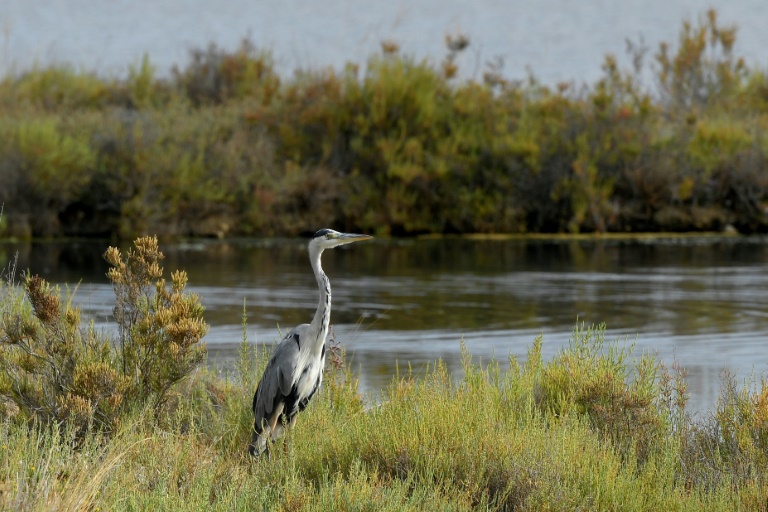To save one of the last wetlands on the French Riviera from rising sea levels, conservationists have taken the unusual step of removing its protective seawalls.
Instead, they have let nature take its course.
The Vieux-Salins d’Hyeres salt marshes sit just below sea level with a stretch of vital but shifting sand beach that separates them from the open sea.
“The coastline was receding with each winter storm,” said wetlands expert Guirec Queffeulou, who helps manage the site located in the heart of the Cote d’Azur, the tourist-clogged French Mediterranean coast.
Conservationists acquired the site through legal wrangling in the late 1990s after the former owner, a salt company that built the protective dykes, wanted to sell it do developers.
But the dykes didn’t really work — even with two kilometres (just over one mile) of seawalls, the sea still crept inland more than 30 metres (around 100 feet).
The beach along its outer edge disappeared, and it seemed inevitable that the rest of the wetland would one day be submerged.
Then after years of studies, work began in 2019 to extract thousands of tons of fake boulders.
– Biodiversity benefits –
“We had to do it gently to avoid damaging the natural barrier of Neptune grass a few metres from the coast,” says Richard Barety of the coastal conservation organisation that has owned the site for the last 20 years.
Astonishingly, once the dykes were gone it only took a few months for a new landscape to emerge, including a wide beach with a small dune.
Small Mediterranean dunes and leaves of dead Neptune grass — an underwater plant vital to the ecosystem — soon formed banks that serve as natural barriers against erosion.
With its vast area separating the land from the sea, the salt marsh plays a crucial role in regulating the local climate and provides a habitat for a rich variety of animal species.
“The interaction between the wetlands and the beach mean that biodiversity here has increased tenfold,” says Barety.
Norbert Chardon, who heads up the regional chapter of the Bird Protection League, says more than 300 bird species have been documented in the area, drawn by fish and insects prey that thrive in the salty water.
– Nature-based solutions –
At the world’s biggest biodiversity summit this week, so-called “nature-based solutions” are at the forefront of ideas for adapting to unprecedented environmental change.
Radhika Murti, who heads up global ecosystem management for the International Union for the Conservation of Nature (IUCN), says the scale of the climate crisis means we can’t rely on technological solutions alone.
“Engineering will never be enough because the disasters are going to get bigger and bigger,” she says.
Instead, we need to learn from the ways that nature has of changing and self-regulating.
“Look at solutions that already exist in nature,” she adds, “so we can work with it to meet our need rather than against it.”
The concept has been around for over a decade and last year the IUCN adopted eight criteria that define solutions as “nature-based” — though so far no project has received the label.
Its proponents emphasise that such solutions are often less expensive and more flexible than using infrastructure or technology.
In Hyeres, residents hope the newly-formed beach will keep the Vieux-Salins from being submerged over the long term.
The old Aleppo pines have died and in their place Tamarisk trees, more adapted to salt water, are taking their places, suggesting that the changes are taking root.
The sea could also eventually seep into the basins, altering the site’s unique water mixture — a possibility long feared but today seen as potentially positive for biodiversity.
Chardon says that whatever happens to the Vieux-Salins could serve as a teaching tool to illustrate the effects of climate change “gently, without frightening people”.








